From time to time we lament the grading of GCSEs in modern foreign languages. The last time we did so was here when they, along with computer science, topped our chart of grading severity.
In this blogpost, we take a look at the 2023 data to see if anything has changed.
Unsurprisingly, it hasn’t.
Data
We use 2023 Key Stage 4 data from the National Pupil Database related to pupils in state-funded mainstream schools.
We are mainly concerned with pupils’ results in GCSE French, German and Spanish. There were 117,000 entries in French, 31,000 in German and 111,000 in Spanish.
We compare pupils’ results in languages to their results in English language and mathematics. Almost all pupils who entered languages also entered English language and maths.
Grade distributions in languages compared to English and maths
First, let’s compare the grade distributions in each of the 3 languages to the grades achieved by the same pupils in English and maths (combined).
All three charts share some common features.
Fewer pupils achieved grades 9-6 in languages compared to English and maths.
And far more achieved grades 3-1 (or were ungraded) in languages compared to English and maths. Grade 3 remains the modal grade in Spanish (compared to 5 in French and German).
In fact, these charts look pretty similar to those we produced a few years ago based on 2018 data.
Grade distributions in humanities compared to English and maths
English and maths tend to get far more curriculum time in schools so by way of an alternative comparison, let’s take a look at geography and history.
These subjects were also found to be more severely graded than English and maths albeit less so than languages and this can be seen in the following charts.
These charts have different common features.
Firstly, more pupils achieve grades 7-9 in humanities than in English and maths (albeit only just so in geography).
But more pupils also achieve grades 3-1 (or are ungraded) in humanities than in English and maths.
As a result, fewer pupils achieve the middle grades 4-6.
Grade distributions in humanities compared to history
So what about pupils who enter both languages and history[1]?
131,000 entries in languages can be matched to an entry in history (some pupils enter more than one of the three languages we study)[2].
The results are fairly similar to those based on English and maths.
Fewer pupils achieve grades 9-6 in languages. Grades 3-5 are much more common.
We can also examine how average grades differ with respect to prior (Key Stage 2) attainment for the same group of pupils.
At one part of the distribution, where average KS2 scaled scores are between 108 and 113, results are on average 1 grade higher in history than in languages.
But pupils with lower levels of prior attainment (KS2 scaled score of 95 or lower) who enter both subjects tend to achieve slightly higher results in languages than in history. This group is relatively small- just over 8000 pupils, 40% of whom have a first language other than English (compared to 19% of all pupils entering both languages and history). KS2 attainment may not be a good indicator of attainment for pupils who were recently arrived to the UK at the time of the tests.
Grading severity compared to 2019
To round things off, we calculate our index of grading severity. This compares the average grade achieved in each subject to the average grade of the same set of pupils in English language and maths.
Compared to 2019, there has been an increase in grading severity compared to English and maths of 0.12 grades in Spanish and 0.06 in French. It fell in German by 0.04 grades.
Grading severity in geography also increased by 0.12 compared to 2019.
Summing up
Pupils tend to achieve lower grades in modern foreign languages than they do in other subjects. This has been the case for some time and there is no sign that the situation is improving.
Was there ever a time when this was not the case? Could it have been that pupils in the past achieved similar grades in MFL than they did in other subjects? Could the quality of MFL teaching relative to other subjects have declined since then? Maybe the divergence in grading between MFL and English/ maths is to be expected given the amount of focus on the latter in the last twenty years.
This leaves us with the question of whether any particular grade (e.g. grade 7) is equivalent from subject to subject. This is implicitly assumed by performance measures such as Progress 8. But can a standard for French be defined that is equivalent to maths, for example?
So perhaps the best that can be done is to make a one-off adjustment to the grade distribution in modern languages (and computer science for that matter). This would be similar to that made to French and German in 2022 (delayed from 2020 due to the pandemic) to bring grading in line with Spanish. However, we argued here and re-iterate based on this piece that these adjustments are not enough.
If this is not acceptable, then allocating different points scores to the grades in different subjects (as shown here) could be an alternative solution.
- I could equally have used geography for this illustration. I picked history as there were more entries matched to MFL entries
- Pupils are counted more than once if they have entered more than one of French, German or Spanish.
Want to stay up-to-date with the latest research from FFT Education Datalab? Sign up to Datalab’s mailing list to get notifications about new blogposts, or to receive the team’s half-termly newsletter.





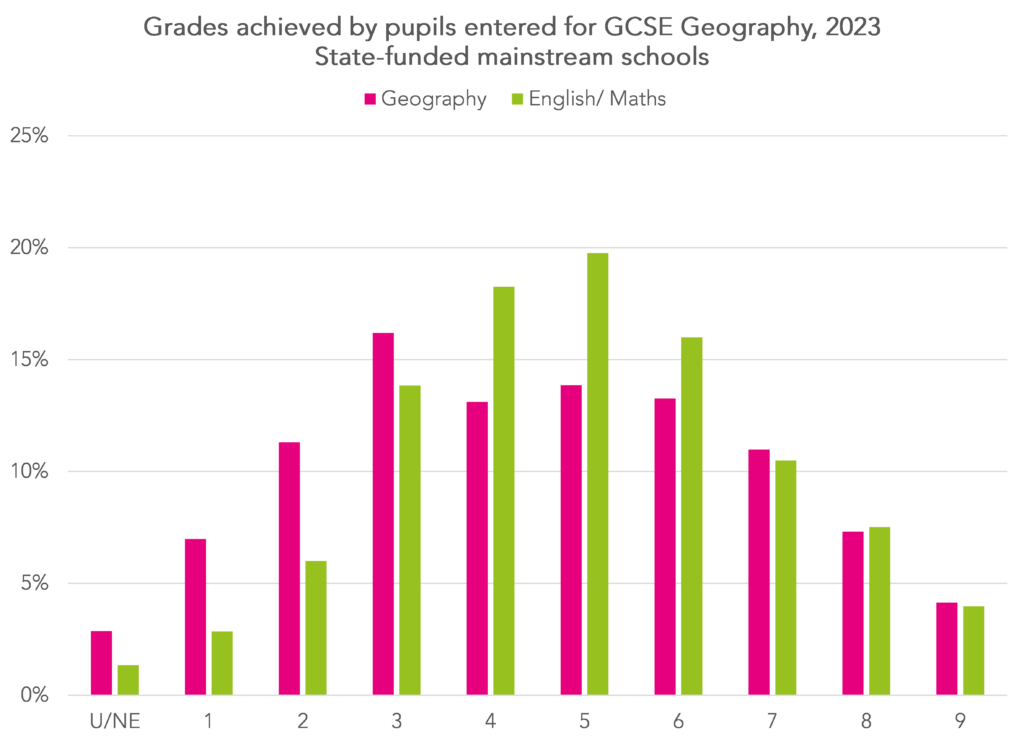
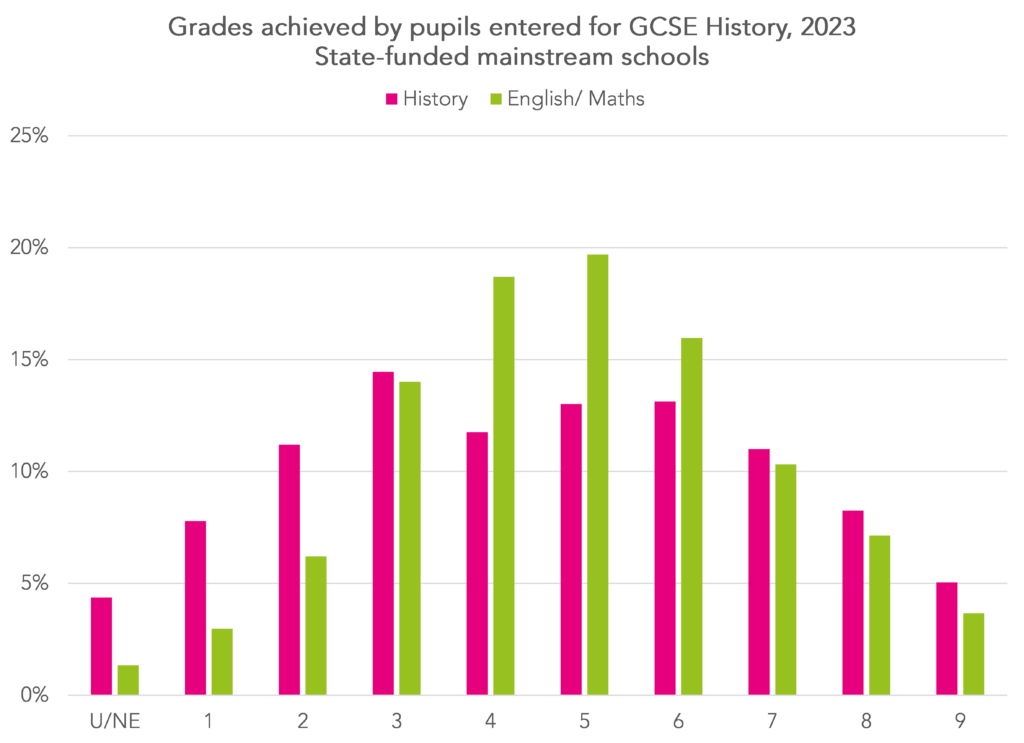
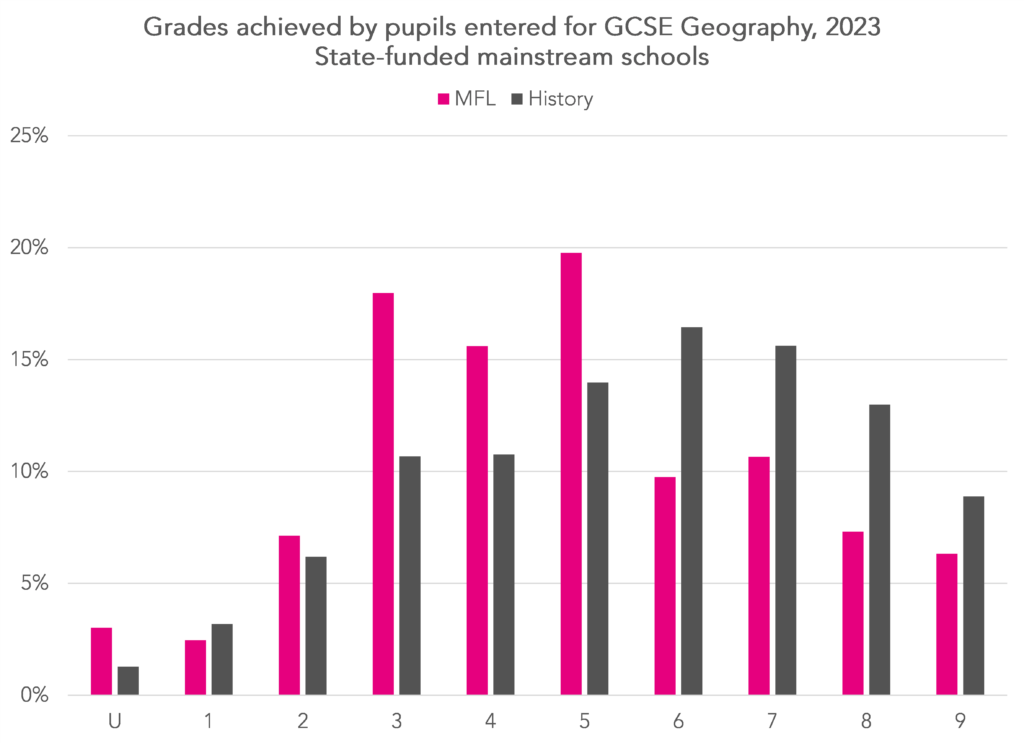
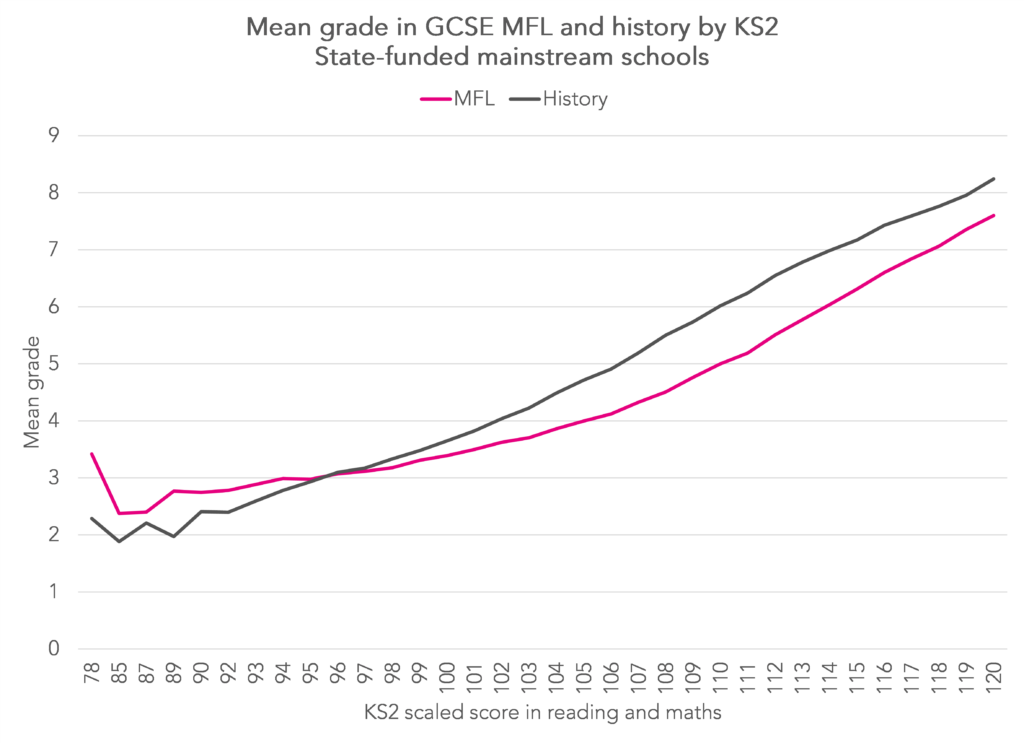
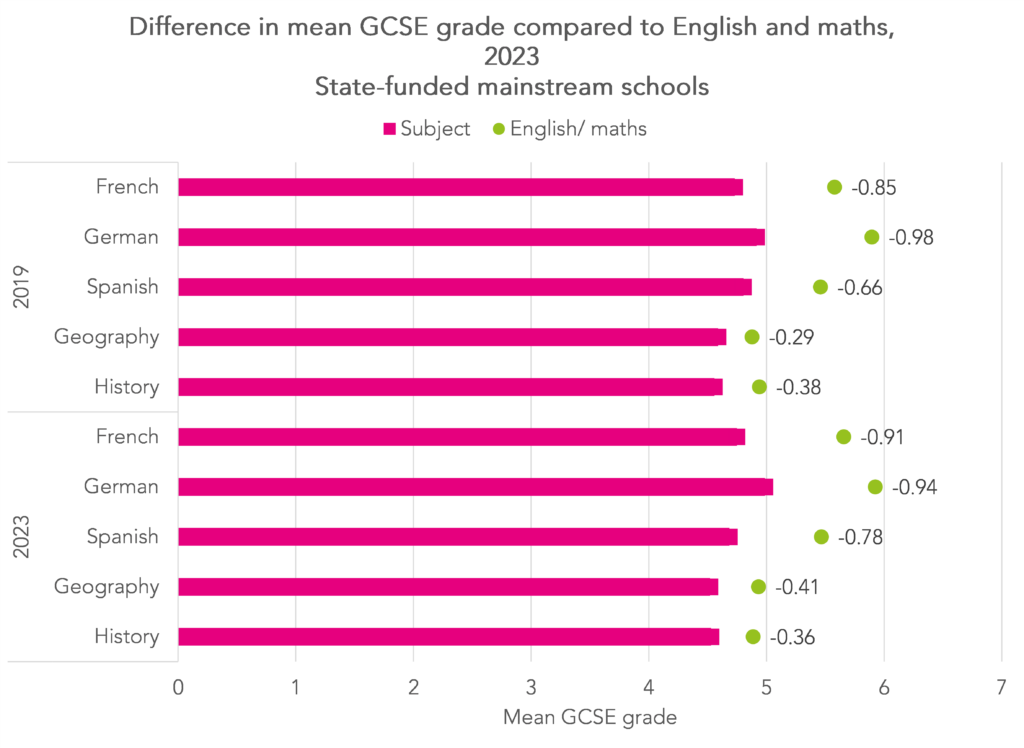
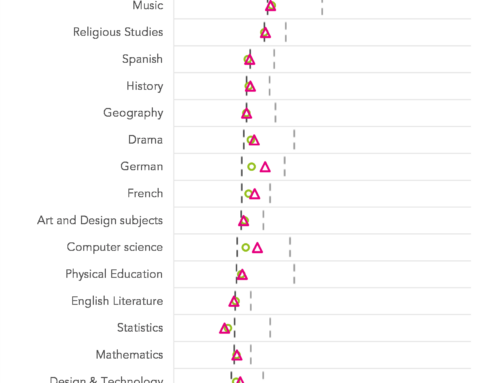

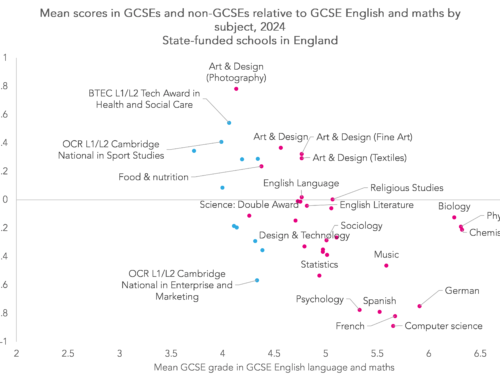


Hopefully the fact that the new Chief Regulator is a Modern Languages specialist will add new momentum to this situation.
You mention Computer Science as also being graded severely. Could we see some similar stats for Computer Science?
Hi Andrew. There’s some stuff for all subjects (incl CS) in https://ffteducationdatalab.org.uk/2023/06/revisiting-subject-difficulty-at-key-stage-4/